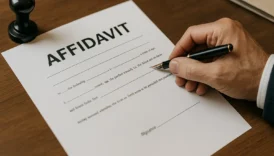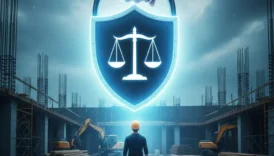What Is a Restraining Order?

A restraining order is a court order designed to protect individuals from harassment, threats, abuse, or unwanted contact. It is a powerful legal tool that limits the actions of another person to ensure the safety and well-being of the protected individual. Restraining orders are common in domestic violence cases, but they can also apply in situations involving stalking, workplace harassment, or neighbor disputes.
Simple Definition
A restraining order is a legal directive issued by a judge that prohibits one person from contacting or approaching another. Violating a restraining order is a serious offense and can result in fines, arrest, or jail time. These orders may be temporary (emergency protection) or long-term, depending on the case.
Real-Life Examples
- Domestic violence: A spouse obtains a restraining order to prevent their partner from coming near their home or workplace.
- Stalking: A victim requests a restraining order to stop repeated unwanted contact and following.
- Workplace harassment: An employee secures a restraining order against a coworker making threats.
- Neighbor disputes: Courts issue restraining orders to stop ongoing harassment or property damage.
Importance of the Term
- Protection: Offers immediate legal safety to vulnerable individuals.
- Deterrence: Prevents ongoing abuse or harassment by imposing legal penalties for violations.
- Empowerment: Provides victims with a legal remedy to protect themselves.
- Flexibility: Can be customized to include distance restrictions, no-contact rules, or temporary custody arrangements.
Comparison (Restraining Order vs. Protective Order)
| Factor | Restraining Order | Protective Order |
|---|---|---|
| Scope | Prevents contact, harassment, or threats | Broader protection, often in domestic violence cases |
| Duration | Temporary or longer-term | Usually longer and more detailed |
| Enforcement | Enforced by police and courts | Enforced by police and courts |
FAQ
1) How long does a restraining order last?
It depends. Temporary orders may last days or weeks, while permanent orders can extend for years.
2) How do you get a restraining order?
A petition is filed with the court, and a judge reviews the case to decide if an order should be granted.
3) Is violating a restraining order a crime?
Yes. Violations can lead to arrest, fines, or jail time.
4) Can restraining orders cover children?
Yes. Courts can extend orders to protect children in domestic violence or custody cases.
5) Are restraining orders public records?
In most jurisdictions, yes. They are part of the court record and can be accessed publicly.
Closing
Restraining orders are vital legal protections that safeguard individuals from threats, harassment, or violence. By enforcing clear boundaries and legal consequences, they provide security and peace of mind for those at risk.






